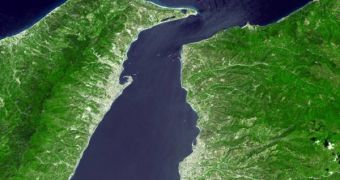Since Antiquity, the leaders of the land that is now Italy had the ambition to connect the country's mainland to the neighboring island of Sicily via a bridge of some sort, regardless of the design. Over the past few decades, discussions about actually building the thing spurred, and a project was finally approved and scheduled to begin in 2006. At the time, Romano Prodi, the Prime Minister of Italy, canceled the constructions, which were approved again on Friday, by new Prime Minister Silvio Berlusconi.
The new leader of the Italian Government has supported the 3.3 kilometer (2 mile)-long suspension bridge ever since his administration first took office, between 2001 and 2006. However, the people who came after them scrapped the design, which is part of a larger, 17.8 billion Euro ($22.5 billion) public work plan, meant to revitalize the country's economy in times of crisis. Ansa, the official Italian news agency, announced that the funds for the bridge would be obtained from a joint public-private partnership.
If the 2006 construction had continued, the new connection between Italy and Sicily would have been completed around 2012. On paper, it's so large, that it exceeds Japan's Akashi-Kaikyo, which is currently the longest suspension bridge in the world, at 1,991 meters (6532 feet). But it would also have to face some difficult challenges, even when it finally does get erected. Earthquakes and tsunamis, albeit smaller than in Japan, are not at all uncommon in the region, and a construction of this length would be very susceptible to influences coming from this type of sources.
Also, critics to the new plan say that the money spent on the bridge would be better off spent on developing Sicily's crumbling infrastructure, its railroads and its highways, which are now in deplorable conditions after decades of neglect. Also, some say that areas of the island are even now without running water, and that authorities need to address that before starting to build gargantuan structures as signs of technological development.

 14 DAY TRIAL //
14 DAY TRIAL //